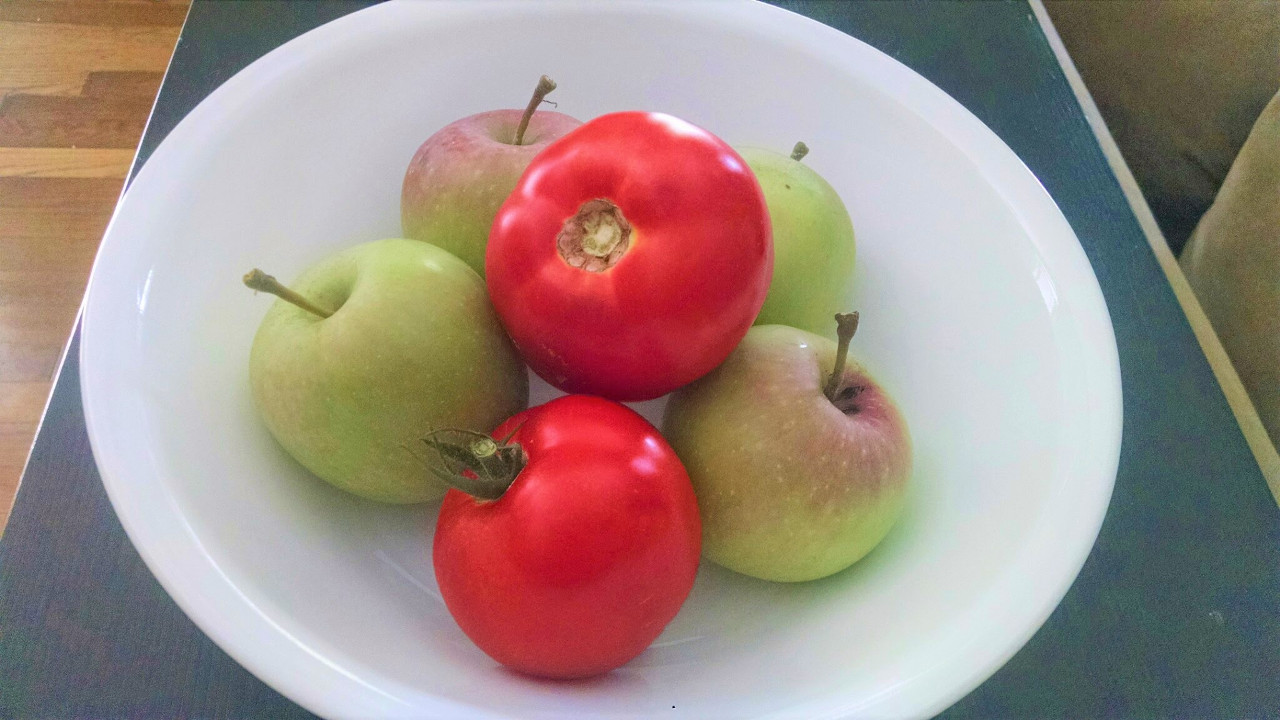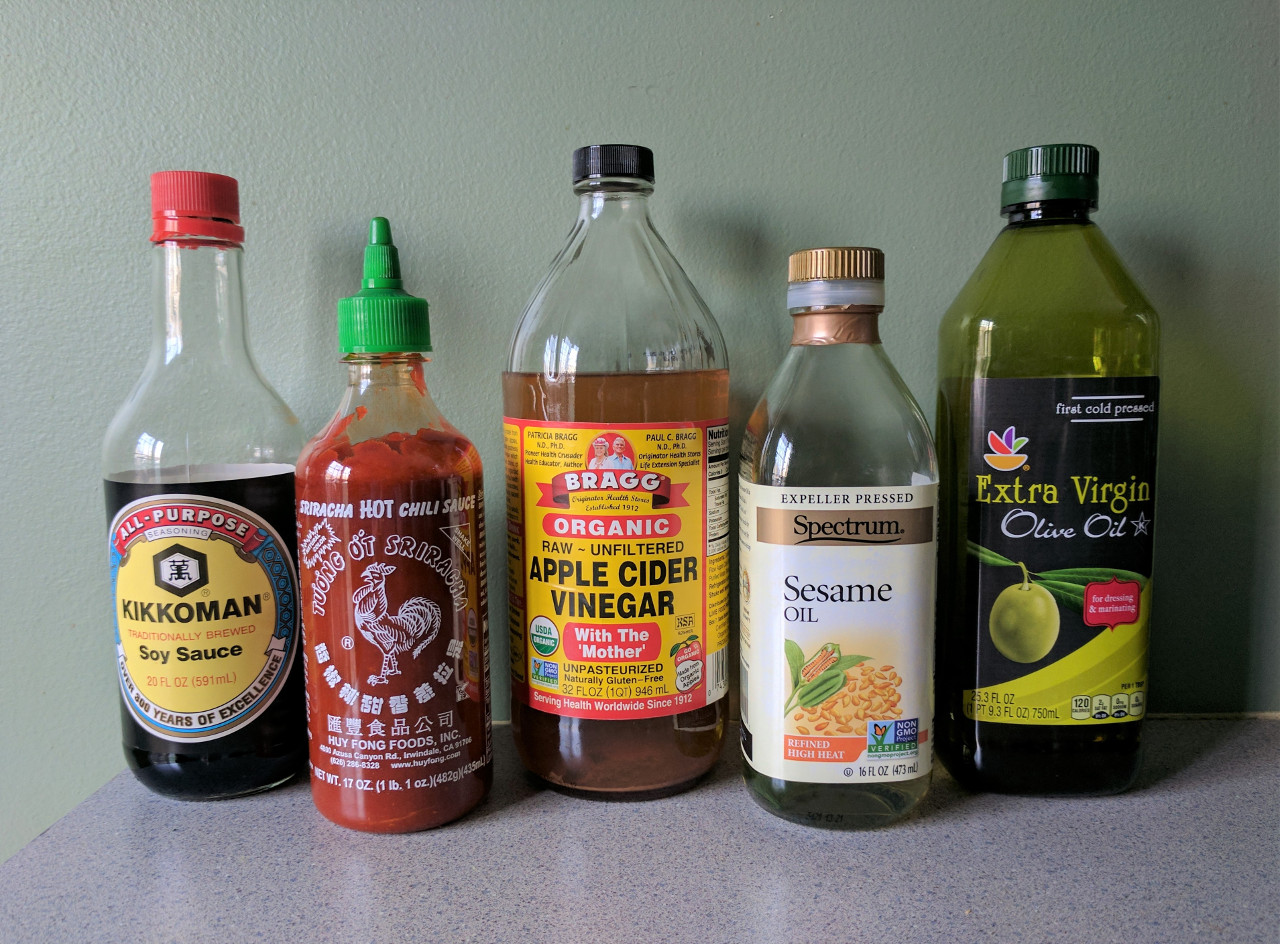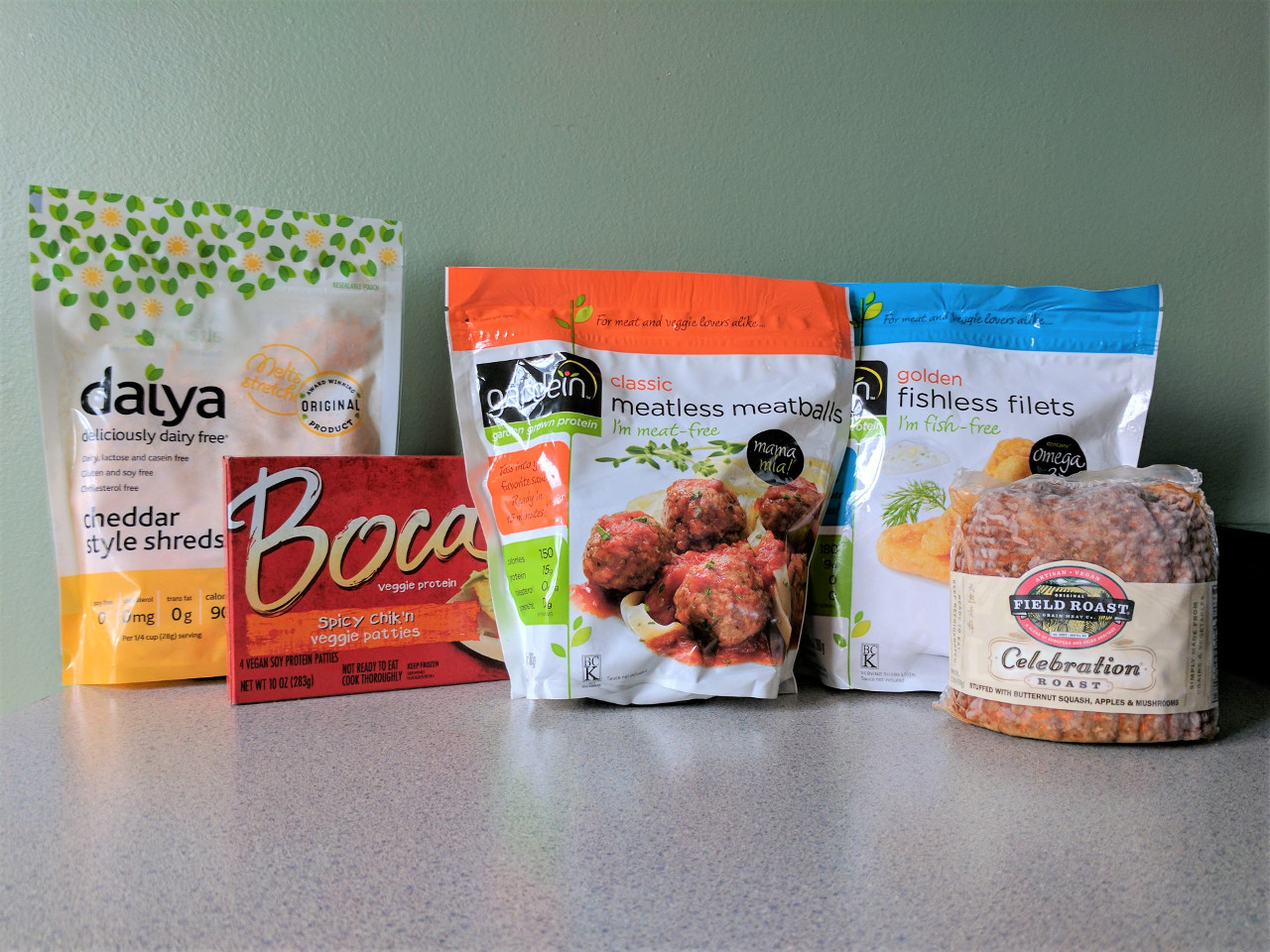When I was a new vegan researching everything I could about my newly adopted lifestyle, I was so excited to enter this next phase of my life. However, at times I also got a little overwhelmed. So many things were opening up to me, and a lot of them were completely alien (seitan? What is a seitan?). Since I was new to cooking as well, I barely had any of the kitchen tools that I needed.
I’ve created this list as a vegan starter guide of sorts – I wanted to include in one place the information that took some time for me to gather as a budding vegan, and ended up being beneficial knowledge to add to my repertoire. Some of the items I list out here (like mock meats) are not truly essentials – more of “nice to haves”. I’ve included them for two reasons: so you can see which of these products we personally consider the best (since we’ve tried so many different kinds and like to test any new ones), and because they are great “transition” foods and particularly useful to new vegans (although I do enjoy eating them as a long-term vegan as well!).
In addition to this list, you can also check out my page on Transitioning to Veganism, which goes into more detail and covers other topics you may encounter when starting out as a vegan.
I hope you find this helpful, and if you think I’m missing anything, please let me know!

Seitan Seitan, otherwise known as “wheat meat”, is an excellent mock meat that you can either buy pre-packaged or make on your own. There are so many ways to create your own seitan, but the dough itself consists of three ingredients – vital wheat gluten, flour, and water. That’s it. Once the dough is made, you can cook it a variety of ways – boiled, baked, boiled then baked – we even used a bread machine once to make a Thanksgiving turkey seitan, and it came out delicious and complete with an outer “skin”!
A disclaimer: If you are celiac, seitan is NOT something you should eat!
Tofu I love tofu. I can literally eat it right out of the package. If you add salt to it, my mind is almost convinced it’s fresh mozzarella. Richard, on the other hand, disagrees – he doesn’t like it raw, and is very particular about the way tofu is cooked. If you’re like him (and I think most people are!), then the way you cook tofu will be very important to your enjoyment of it.
A quick note: To me, a tofu press is absolutely essential. Tofu retains a lot of water, and pressing it removes the moisture and makes all the difference in how it takes on whatever flavor you add to it. If you don’t want to get a press, flattening it with paper towels and heavy plates works too. But if you’re planning on eating a lot of tofu, I highly recommend getting a press.
TVP TVP is Textured Vegetable Protein, sometimes also called TSP (Textured Soy Protein). TVP/TSP is an inexpensive meat replacement made from high protein soy flour; it works well in recipes where you would normally use minced meat. It comes in dehydrated form, so it must be rehydrated before use (generally one cup of water or veggie stock to one cup of TVP) or added to a sauce. Like tofu, it takes on the flavor of whatever spices and seasonings you put into it. You can also get veggie or soya chunks, which is TVP in larger chunk form.
Tempeh Tempeh is another mock meat. It’s created from fermented soybeans and can be found pre-packaged. It has a lot of protein and contains probiotics as well. It’s commonly made into bacon, but it can be used in anything that you want to replace meat in. The consistency is a bit strange to some people, but to me, the way it’s cooked and what it’s eaten with make all the difference.
Egg Replacements Egg replacer is a powder that you whisk with water until it forms an egg-like consistency. It’s frequently used for breading purposes, as it allows the breadcrumbs or panko to stick to whatever you’re coating it with, as well as for baking.
Eggs can also be substituted with chia or flax seeds – to make a flax or chia “egg”, you just need to mix 1 tablespoon of ground flax or chia seeds (measured after grinding) with 3 tablespoons of water, ensuring to allow it to set for 10-15 minutes.
Nutritional Yeast Otherwise known as “nooch”, nutritional yeast is a deactivated yeast that has a strong cheese flavor. We vegans love our nooch! It can be used in anything you want to add a cheese flavor to – sauces, dips, soups, etc. It also usually comes fortified with B12.
Faux Cheeses There are so many vegan cheeses available these days. We always try to have a few on hand, and we use specific ones for different things. Daiya mozzarella shreds or cheddar shreds are what we use when we want melty cheese in a pasta or Mexican dish; they also now have blocks in several flavors – the cheddar block is amazing and if you shred it with a grater, to me it’s actually better than the pre-made cheddar shreds.
We like Chao and Follow Your Heart slices for sandwiches – Daiya makes slices too but unfortunately I personally don’t recommend them. Follow Your Heart also makes grated and shredded parmesans which are excellent.
An important note about cheeses – some cheese will say “dairy free” but they actually contain casein, so if it’s a brand you haven’t bought before (and isn’t one of the ones mentioned above) you’ll need to read the ingredients.
Milks There are so many milks available now – hemp, almond, soy, cashew, flaxseed, oat, hazelnut – there are even chocolate milk versions. There are tons of options and like cheeses, they are coming up with more all the time (and many are readily available at your local supermarket). We also always have a can or two of coconut milk in the pantry.
We use milks in our fruit smoothies and hot dishes like pasta sauces, cheese sauces, soups, etc. For smoothies, I like sweetened vanilla almond milk; for cooking we use either unsweetened almond milk, regular coconut milk or this culinary coconut milk by So Delicious. You can also make your own homemade cashew cream, which is surprisingly easy and great for using in soups and sauces.
Agave Since we don’t eat honey, agave is what we use as a replacement. It’s a great sweetener that is sticky like honey and works well in a lot of things. We use it most often in raw dishes, in dressings, and in fruit smoothies.
Mock Meats Although we like to eat whole foods as much as possible, it’s always nice to have some faux meat options in the fridge and freezer. They’re also great for when you want something quick!
We keep Tofurky Deli Slices in our fridge to have available for sandwiches, and most of the other items listed here we’ll freeze – a lot of them are meant to be kept in the freezer, but we also freeze things like bacons and sausages because they last much longer that way.
These are some of our favorite products: Tofurky Deli Slices Lightlife Smart Bacon Yves Veggie Bacon Boca Spicy Chik’n Patties Beyond Burger Beyond Meat Grilled Strips Gardein Fishless Filets Gardein Crispy Tenders Gardein Turk’y Cutlets Gardein Meatless Meatballs Gardein Holiday Roast Gardein Beefless Ground Gardein Chick’n Sliders Field Roast Frankfurters Field Roast Classic Meatloaf Tofurky Sausages Tofurky Holiday Roast with Gravy
Fresh Items We always have fresh fruits, veggies and herbs in the house – we enjoy doing different “veggies of the week” for dinner, and we also use them for salads, sandwich toppings, and for garnishing. At any time when you look in our refrigerator, we’ll have romaine lettuce, tomatoes, peppers, garlic and onions (red, white and green), as well as a head of cauliflower or broccoli, brussels sprouts and/or mushrooms.
We also like to keep the following: Avocados – we don’t get them every week, but they’re great to put on toast, sandwiches, wraps and burgers, or to make guacamole. Bananas – although neither one of us usually eats them plain, we freeze them to have available for smoothies. Basil – we tend to buy this more in the summertime, and like to grow it in our yard as well. Sometimes we make pesto in batches and freeze it, which is very convenient and makes it easy to enjoy all year round. Other herbs we like to have are parsley, coriander and occasionally dill.
Juicing Veggies In addition to the fresh produce listed above, we get fruits and veggies that we use primarily for the juices that we make throughout the week (although we do incorporate them into meals or have them as snacks too). These are the items we get regularly for juicing:Ginger Cabbage Beets Carrots Celery Kale Apples Oranges and/or pineapple Lemons Limes
Condiments We always ensure to have the following in our pantry or fridge: Earth Balance Vegan mayo (either Vegenaise or Just Mayo) Ketchup Salsa Tahini Soy sauce Dijon mustard Brown mustard Sriracha Vegan sour cream (either Follow Your Heart or Tofutti) Vegan cream cheese (Tofutti and Kite Hill are some options, but there are more) Vegan worcestershire (Annie’s makes one, there are others as well) Molasses Blackstrap molasses Hummus
Oils and Vinegars These are the main ones we always keep in our kitchen: Extra virgin olive oil Sesame oil Coconut oil Flax oil Peanut oil Cooking spray Apple cider vinegar Rice vinegar
Beans/Legumes We like to keep either canned or dried versions of these (in some cases both!): Pinto beans Kidney beans Chickpeas (garbanzo beans) Black beans Lentils Cannellini and/or Great Northern beans Split peas
Grains These are the ones we use most often: Brown rice White rice Bulgar wheat Sushi rice Amaranth Quinoa
Nuts and Seeds Keep nuts and seeds in the fridge so they last longer! Cashews Almonds Sesame seeds Pine nuts Walnuts
Spices and Seasonings Organizing your spices in an easily accessible way makes it so much more convenient when cooking; we use these spice organizers that fit well in a pantry or cupboard.
These are the ones we use with the greatest frequency: Bay leaves Cayenne All spice Chili powder Curry powder Garam masala Garlic powder Onion powder Cumin Oregano Dried dill Paprika (regular and smoked) Nutmeg Turmeric Thyme Ground pepper Sea saltIodized salt Kala namak Dulse flakes
Bouillon Our absolute favorites are Better Than Bouillon Vegetable Base, No Beef Base and No Chicken Base. They can usually be found in any supermarket, but if you’re having difficulty locating them (the No Chicken and No Beef can be elusive) you can get them online or at most Whole Foods and health food stores.
Starches, Flours and Sugars Corn starch All purpose flour Chickpea flour Sugar (some sugars are refined with bone char and are not vegan; one brand we like is Florida Crystals) Baking soda
Sweet Items One thing we always have in the house is Cacao powder, which we use in smoothies when we want a chocolate flavor. (Cacao is not particularly sweet, so we always add some agave to the smoothie as well.) I also like to have vegan hot chocolate to drink on cold winter nights by the fireplace.
We’ve recently discovered Go Max Go Foods, an awesome vegan company that makes chocolate candy bars. (Their Thumbs Up bar is similar to a Butterfinger, the Twilight reminiscent of a Milky Way, and the Jokerz bar is just like a Snickers!)
Some other items that we sometimes keep in the house (not often as we rarely use them) are vegan chocolate chips (like these from Enjoy Life) and boxed cookie mix by Cherrybrook Kitchen.
Freezer Items We keep frozen fruits for smoothies, and we usually have some form of vegan ice cream – either pints, sandwiches of ice cream bars – our favorites are So Delicious and Tofutti, but there are many more – Ben and Jerry’s and Breyers even make vegan ice cream now!
We always have an assortment of frozen veggies, and after making pasta at home we often make extra to put in the freezer so it’s always available when we want it.
The rest of what we have in our freezer are “convenience foods” like the ones listed above in the Mock Meats section. We also like to keep a frozen pizza or two; Daiya makes quite a few, and Amy’s Kitchen makes two vegan ones: Roasted Vegetable and Margherita.
Canned and Pre-packaged These are some random store-bought things we like to have in the fridge or the pantry: Tortillas Taco shells (soft and hard) Diced tomatoes Pasta sauce Bottled lemon juice Kalamata olives Nori sheets Dry pastas Popcorn kernels Enchilada sauce Panko Breadcrumbs
Kitchen Tools and Utensils Here is a list of the items we use regularly, in no particular order: Food processor Blender Pressure cooker Panini press Juicer Coffee machine Citrus juicer Cast iron pan Non stick pans Wok Knife set Whisks, tongs, spatulas Mixing bowls Strainers Glass containers Garlic press Potato masher Vegetable peeler Spiralizer Grater Cutting boards Measuring cups and spoons Tofu press
A note on vegan/vegetarian/vegan-friendly brands: It’s important to be aware that while there are more and more vegan options available in regular supermarkets these days, there are some brands and items that are vegetarian and either offer some vegan-friendly items, or none at all.
These brands are all vegan: Follow Your Heart Daiya Gardein Field Roast Beyond Meat Earth Balance
Vegetarian brands (you will need to read the ingredients): Boca (they are actually part of Kraft; the vegan items will say “vegan” on the front of the package) Lightlife (the only thing we currently eat of theirs is the bacon) Yves (the Canadian bacon is vegan) Go Veggie (the parmesan cheese is vegan, but the slices and shreds are not) Quorn Morningstar
This post contains Affiliate Links; please read our Affiliates Disclosure for more information.


